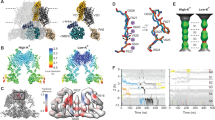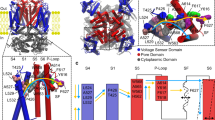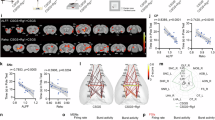Abstract
Aim:
To examine the effects of ginseng saponins on the heterologously expressed human ether-a-go-go related gene (HERG) that encodes the rapid component of the delayed rectifier K+ channel.
Methods:
A two-electrode voltage clamp technique was used. HERG currents were recorded in Xenopus oocytes injected with HERG cRNA.
Results:
Crude saponins of Korean red ginseng (GS) induced a minimal increase of the maximal HERG conductance without changes in the voltage-dependent HERG current activation and inactivation curves. GS, however, decelerated HERG current deactivation in a concentration-dependent manner, which was more noticeable with panaxitriol (PT) than panaxidiol (PD). Consistently, ginseng saponins increased the HERG deactivation time constants with the order of potency of Rg1 (a major component of PT)>Rf 1>Rb1 (a major component of PD). Re had little effect on HERG deactivation. During a cardiac action potential, GS increased the outward HERG current.
Conclusion:
Ginseng saponins enhance HERG currents, which could be in part a possible mechanism of the shortening cardiac action potential of ginseng saponins.
Similar content being viewed by others
Log in or create a free account to read this content
Gain free access to this article, as well as selected content from this journal and more on nature.com
or
References
Chen X . Cardiovascular protection by ginsenosides and their nitric oxide releasing action. Clin Exp Pharmacol Physiol 1996; 23: 728–32.
Zhang JM, Matsuura Y, Sueda T, Orihashi K . Beneficial effects of ginsenosides of stems and leaves on cardiac and coronary vascular functions after 12–hour rat heart preservation. Trans plant Proc 1999; 31: 2175–8.
Jeon BH, Kim CS, Kim HS, Park JB, Nam KY, Chang SJ . Effect of Korean red ginseng on blood pressure and nitric oxide production. Acta Pharmacol Sin 2000; 21: 1095–100.
Zhan Y, Xu XH, Jiang YP . Protective effects of ginsenoside on myocardiac ischemic and reperfusion injuries. J Natl Med J China 1994; 74: 626–8.
Wu JX, Chen JX . Negative chronotropic and inotropic effects of Panax notoginseng saponins. Acta Pharmacol Sin 1988; 9: 409–12.
Li XJ, Zhang BH . Studies on anti-arrhythmia effects of panaxatriol saponins isolated from Panax notoginseng. Acta Pharm Sin 1988; 23: 168–73.
Zhang RB, Li ZY, Shi HY . Cardiac arrhythmia induced by hypothalamic stimulation in cardiac ischemic rabbits and the antiarrhythmic action of Panax ginseng. Acta Pharmacol Sin 1982; 3: 226–30.
Carmeliet E . K+ channels and control of ventricular repolarization in the heart. Fundam Clin Pharmacol 1993; 7: 19–28.
Sanguinetti MC, Jurkiewicz NK . Two components of cardiac delayed rectifier K+ current. Differential sensitivity to block by class III antiarrhythmic agents. J Gen Physiol 1990; 96: 195–215.
Wymore RS, Gintant GA, Wymore RT, Dixon JE, McKinnon D, Cohen IS . Tissue and species distribution of mRNA for the IKr-like K+channel, erg. Circ Res 1997; 80: 261–8.
Sanguinetti MC, Jiang C, Curran ME, Keating MT . A mechanistic link between an inherited and an acquired cardiac arrhythmia: HERG encodes the IKr potassium channel. Cell 1995; 81: 299–307.
Wang S, Liu S, Morales MJ, Strauss HC, Rasmusson RL . A quantitative analysis of the activation and inactivation kinetics of HERG ex pressed in Xenopus oocytes. J Physiol 1997; 502: 45–60.
Abbott GW, Sesti F, Splawski I, Buck ME, Lehmann MH, Timothy KW, et al. MiRP1 forms IKr potassium channels with HERG and is associated with cardiac arrhythmia. Cell 1999; 97: 175–87.
Curran ME, Splawski I, Timothy KW, Vincent GM, Green ED, Keating MT . A molecular basis for cardiac arrhythmia: HERG mutations cause long QT syndrome. Cell 1995; 80: 795–803.
Suessbrich H, Waldegger S, Lang F, Busch AE . Blockade of HERG channels expressed in Xenopus oocytes by the histamine receptor an tagonists terfenadine and astemizole. FEBS Lett 1996; 385: 77–80.
Rampe D, Roy ML, Dennis A, Brown AM . A mechanism for the proarrhythmic effects of cisapride (Propulsid): high affinity blockade of the human cardiac potassium channel HERG. FEBS Lett 1997; 417: 28–32.
Drolet B, Vincent F, Rail J, Chahine M, Deschenes D, Nadeau S, et al. Thioridazine lengthens repolarization of cardiac ventricular myocytes by blocking the delayed rectifier potassium current. J Pharmacol Exp Ther 1999; 288: 1261–8.
Volberg WA, Koci BJ, Su W, Lin J, Zhou J . Blockade of human cardiac potassium channel human ether-a-go-go-related gene (HERG) by macrolide antibiotics. J Pharmacol Exp Ther 2002; 302: 320–7.
Mitcheson JS, Chen J, Lin M, Culberson C, Sanguinetti MC . A structural basis for drug-induced long QT syndrome. Proc Natl Acad Sci USA 2000; 97: 12329–33.
Tseng GN . IKr: the hERG channel. J Mol Cell Cardiol 2001; 33: 835–49.
Bai CX, Sunami A, Namiki T, Sawanobori T, Furukawa T . Electrophysiological effects of ginseng and ginsenoside Re in guinea pig ventricular myocytes. Eur J Pharmacol 2003; 476: 35–44.
Bai CX, Takahashi K, Masumiya H, Sawanobori T, Furukawa T . Nitric oxide-dependent modulation of the delayed rectifier K+current and the L-type Ca2+ current by ginsenoside Re, an ingredient of Panax ginseng, in guinea-pig cardiomyocytes. Br J Pharmacol 2004; 142: 567–75.
Park JB, Choe H, Lee YK, Ha KC, Rhee KS, Ko JK, et al. Open channel block by KCB-32[1–(2–amino-4–methanesulfonamidophenoxy)-2–[N-(3,4–dimethoxyphenethyl)-N-methylamino]ethane hydrochloride] of the heterologously expressed human ether-a-go-go-related gene K+channels. J Pharmacol Exp Ther 2002; 302: 314–9.
Kiehn J, Wible B, Ficker E, Taglialatela M, Brown AM . Cloned human inward rectifier K+ channel as a target for class III methanesul-fonanilides. Circ Res 1995; 77: 1151–5.
Spector PS, Curran ME, Keating MT, Sanguinetti MC . Class III antiarrhythmic drugs block HERG, a human cardiac delayed rectifier K+ channel. Open-channel block by methanesulfonanilides. Circ Res 1996; 78: 499–503.
Sanguinetti MC . Dysfunction of delayed rectifier potassium channels in an inherited cardiac arrhythmia. Ann N Y Acad Sci 1999; 868: 406–13.
Zhou Z, Gong Q, Epstein ML, January CT . HERG channel dysfunction in human long QT syndrome. Intracellular transport and functional defects. J Biol Chem 1998; 273: 21061–6.
Bian J, Cui J, McDonald TV . HERG K+ channel activity is regulated by changes in phosphatidyl inositol 4,5–bisphosphate. Circ Res 2001; 89: 1168–76.
Choi S, Rho SH, Jung SY, Kim SC, Park CS, Nah SY . A novel activation of Ca2+-activated Cl- channel in Xenopus oocytes by Ginseng saponins: evidence for the involvement of phospholipase C and intracellular Ca2+ mobilization. Br J Pharmacol 2001; 132: 641–8.
Choi S, Jung SY, Ko YS, Koh SR, Rhim H, Nah SY . Functional expression of a novel ginsenoside Rf binding protein from rat brain mRNA in Xenopus laevis oocytes. Mol Pharmacol 2002; 61: 928–35.
Nah SY, Park HJ, McCleskey EW . A trace component of ginseng that inhibits Ca2+ channels through a pertussis toxin-sensitive G protein. Proc Natl Acad Sci USA 1995; 92: 8739–43.
Lawson, K . Potassium channel openers as potential therapeutic weapons in ion channel disease. Kidney Int 2000; 57: 838–45.
Author information
Authors and Affiliations
Corresponding author
Additional information
Project supported by a grant from Korea Research Foundation (2000-002-E00005).
Rights and permissions
About this article
Cite this article
Kim, Cs., Son, Sj., Kim, Hs. et al. Modulating effect of ginseng saponins on heterologously expressed HERG currents in Xenopus oocytes. Acta Pharmacol Sin 26, 551–558 (2005). https://doi.org/10.1111/j.1745-7254.2005.00116.x
Received:
Accepted:
Issue date:
DOI: https://doi.org/10.1111/j.1745-7254.2005.00116.x
Keywords
This article is cited by
-
Yin and Yang of ginseng pharmacology: ginsenosides vs gintonin
Acta Pharmacologica Sinica (2013)
-
Roles and mechanisms of ginseng in protecting heart
Chinese Journal of Integrative Medicine (2012)



